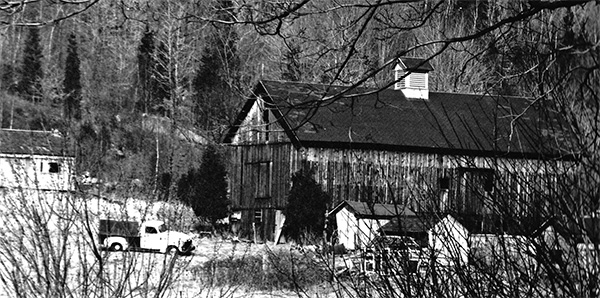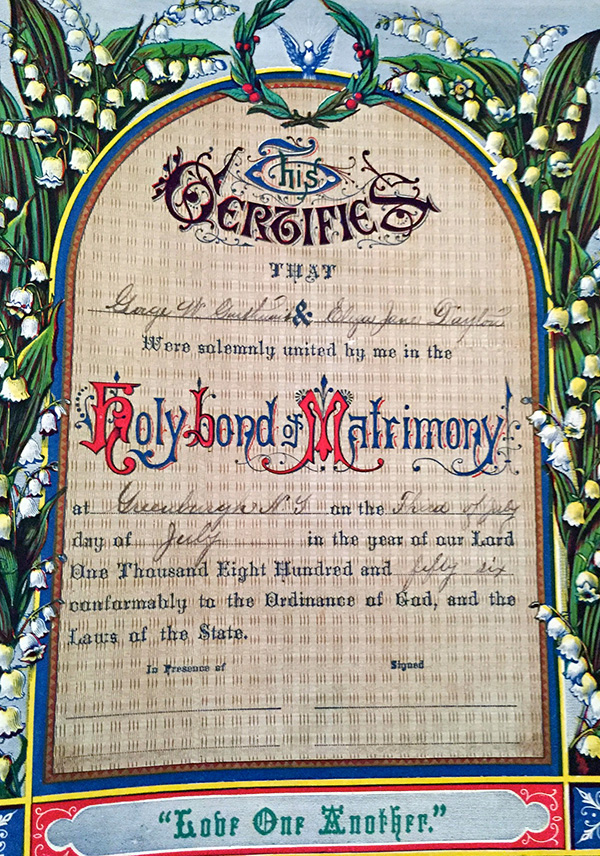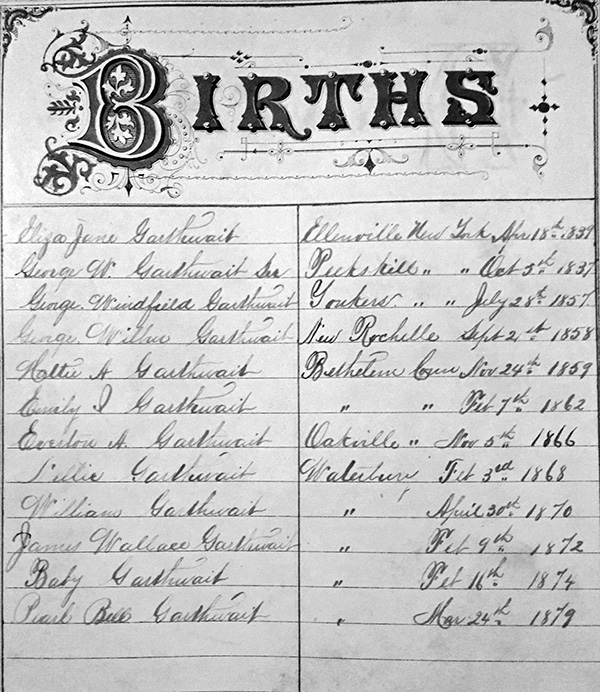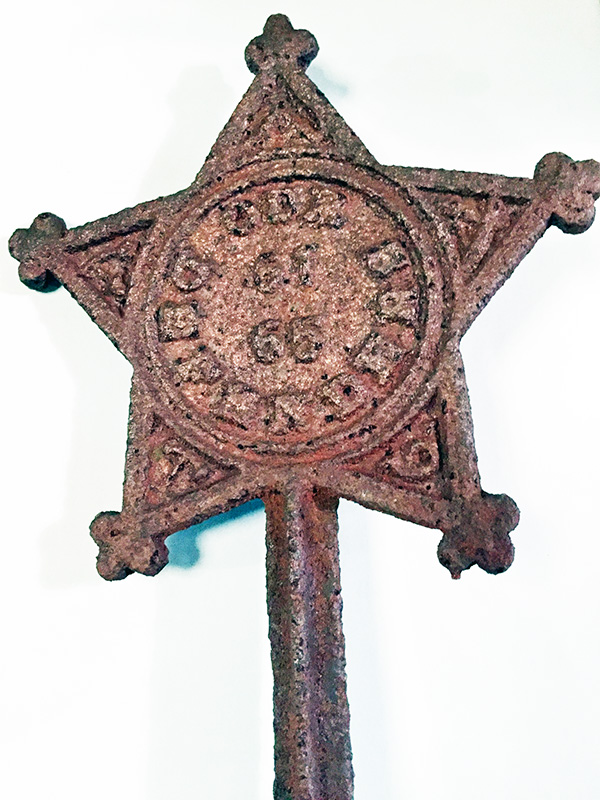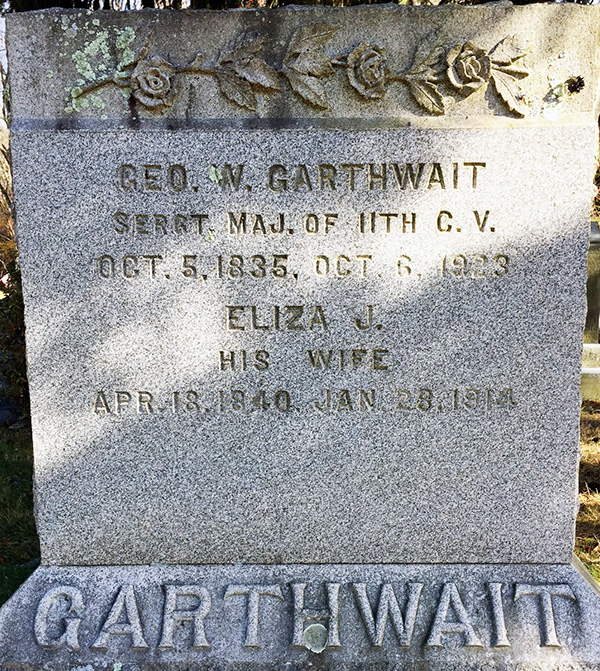|
|
||||||||||||
 |
 |
|
Wolcott Historical Society News - December 2016 By Florence Goodman Last month's article dealt with "Circles of Life" and the return of Nancy Minor Hall's Bible to Wolcott. This month I will share an interesting story about another bible, a Civil War soldier, his journal and grave marker that have found their way back to our museum.
On Sunday afternoons during the month of October our Schoolhouse Museum is open to the public. Fall has proven to be a great time for visitors and usually they come bearing gifts in the form of Wolcott artifacts. The last Sunday in October was a great day because Ruth Simpson, Nancy Rhodes (a relative of Ruth's on the Sills side) and Lois Carey visited our museum to donate several items.
Ruth is the great granddaughter of George W. Garthwait and her mother was Mildred Garthwait Sills Porzenheim. Mildred grew up on the Sills Dairy Farm, which was on Wolcott Road located across from Bin 300 where Sunrise Road is found today. Ruth and Nancy stated that the farm had over one hundred milking cows. I remember the farm in the early 1950s, but I don't think it was operational then. We have a picture of a beautiful old barn that was on the property, but never had much information about the farm so it was great to find out a few more details about it.
Nancy Rhodes donated the Garthwait family bible and Ruth donated her great grandfather's Civil War grave marker and an interesting journal written by her grandfather while he was held at a Confederate prisoner-of-war-camp in Andersonville, GA during the Civil War. I will share some of his story with you, but we will also be able to put the entire journal on our website soon.
George W. Garthwait was born on October 5, 1834 in Peekskill, NY. He was a mason by trade, but when the war began he wanted to serve his country. He was well educated in country schools in NY; just being able to read and write greatly helped his military career. He married Eliza Jane Dayton in 1856 in Greensburg, N.Y. They arrived in Waterbury, Connecticut in 1859 and then moved to Bethlehem, Connecticut.
On October 15,1861 he enlisted in the Army of the United States of America and was mustered out on October 25th. His first battle was at Newbern, NC on March 14, 1862, where they captured the camp and all supplies. They remained at that camp for three months and then moved onto Suffolk, VA; they were attacked on May 18, 1862. They fought off the Rebels for three months day and night, and by September 12, 1862 they advanced towards Frederick, MD chasing the enemy. At Turner's Gap, South Mountain, MD on the 14th of September they fought a hard battle and did not lose any men, but the following week turned deadly at the Battle of Antietam (Sharpsburg. MD). George was wounded in this battle on September 17, 1862 being struck by buckshot that penetrated his thigh, but he said," It didn't amount to much." They lost over 150 men and hundreds wounded and more missing at this battle. He recovered from his injury and reenlisted as a veteran on December 13, 1863. He was promoted to corporal by February 26, 1864 and then to sergeant on March 18 of that year. Before being captured, he fought in battles at Fredericksburg, VA, Swift's Creek, VA and then Drewry's Bluff, VA (5 miles south of Richmond, VA on the James River) where he was sergeant of the company. It was here on May 16, 1864 that he was wounded again. He stated that while they were retreating a shell struck a pine tree over his head scattering the tree limbs everywhere. One of the limbs struck him in the head and knocked him out; once he awakened he rejoined his regiment, only to be captured and detained for months in Andersonville prison. His account of the pain and suffering that he and his fellow soldiers endured is unbelievable. They were almost starved to death and many men were so miserable that they voluntarily allowed themselves to be shot to death. Garthwait states, "The only water we had to drink was what flowed thru a brook thru the stockade and into the grounds. There were no arrangements for sanitation and all the filth of the entire camp drained into this brook. We had to drink the water just the same." He stated that the Confederates purposely weaken them so they would be unfit for service again. When he entered the prison he weighed 157 pounds and when he was released he weighed 87 pounds. All total he was incarcerated for nine months and twelve days in southern prisons.
Records show that he was paroled at N.E. Ferry, NC on February 26, 1865. After he was released from a military hospital his sister Jane Ann met him in New York and took him to Bethlehem, CT. Mr. Garthwait reported for duty again on November 24, 1865 and was appointed sergeant major the very next day, but did not participate in any remaining battles. When he returned to Connecticut he was unable to return to work as a mason/carpenter for another year and a half. When he was able to work again, he was employed by a contracting firm called King & Warren and later Chatfield & Chatfield until 1880.
George and his wife Eliza purchased land in Wolcott in 1883 from William Perkins, which was on the boundry of Waterbury and Wolcott. He stated that he was taxed yearly by three school districts, Waterbury, Wolcott and the Mill Plain.
Sergeant Major George W. Garthwait served his country well and died on October 6, 1923, one day after his 88th birthday. He is buried at Woodtick Cemetery where six generations of Garthwait's are interred.
(Information for this article was taken from a newspaper article from the Waterbury paper, July 16, 1911, which included the journal of George W. Garthwait, the Garthwait Bible, and a conversation with Ruth Simpson, Farmington, CT)
The Sills Farm was located on Wolcott Road where Sunrise Road is today and across from Bin 300.
Garthwait Bible page showing the marriage of George Garthwait to Eliza Jane Dayton in 1856.
Garthwait Bible page showing births in the family.
The Civil War flag holder that was on Sergeant Major George W. Garthwait's grave in Woodtick Cemetery.
The Garthwait tombstone of George and his wife Eliza located in Woodtick Cemetery.
To view past installments of the Wolcott Historical Society News, click here.
|
|
|
[Home]
[News]
[Purpose]
[Calendar]
[Museum]
[Membership]
[History]
[Contacts]
[Links]
All material at Wolcott Historical Society Web sites Copyright © 2000-2016 Wolcott Historical Society |
